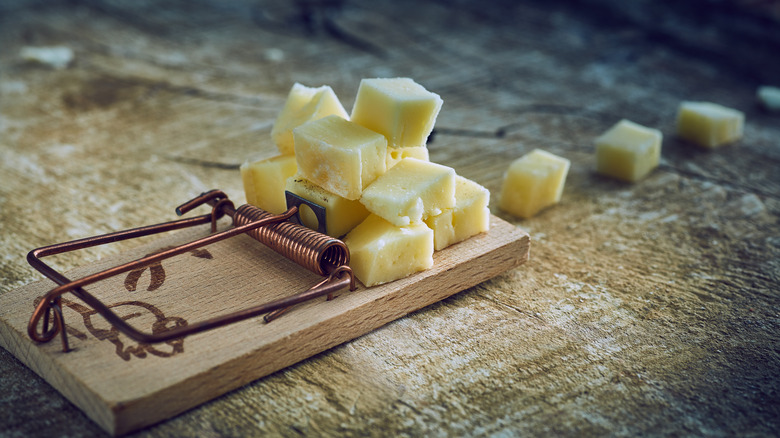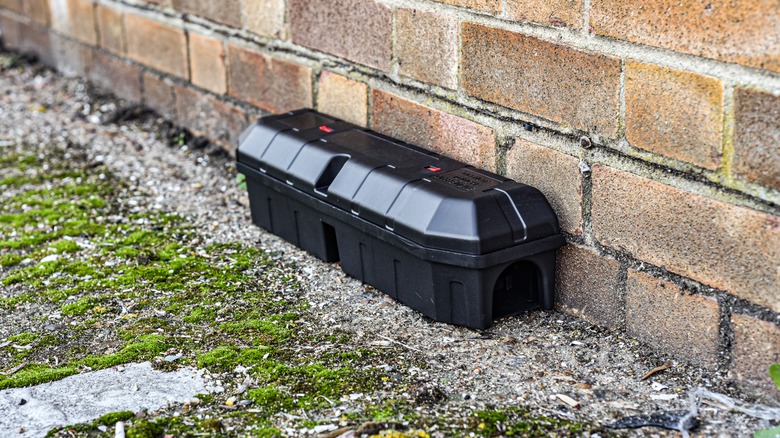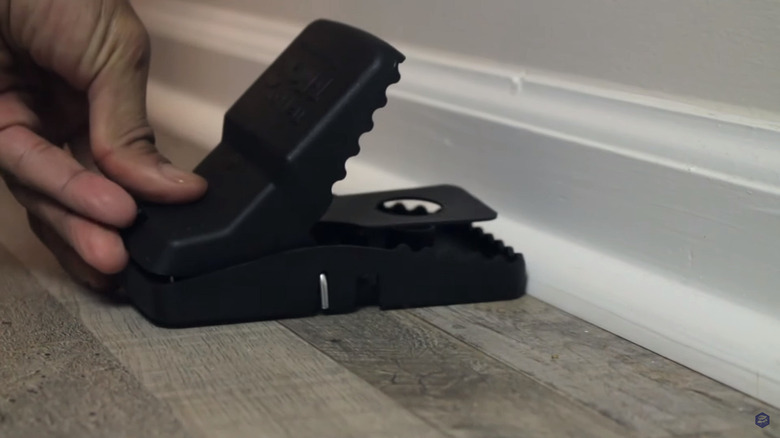The Mistake Everyone Makes When Using Traps To Catch Mice
Unless you want to crouch in the dark and spring into action with a big butterfly net, you're probably planning to use bait of some kind to catch mice in your home. The consensus is that you should use peanut butter, or perhaps hazelnut spread or chocolate, though some trap manufacturers sell their own gel baits. But improperly placing the trap is a surefire way to miss your target, even with the right bait.
Mouse traps are among the best ways to deal with a mouse problem, but it can seem like they aren't getting the job done for a number of reasons. It definitely helps to understand a little about mouse psychology when placing your traps because mice are usually cautious creatures of habit, so they will be cautious approaching your bait. This can cause them to be wary of traps and approach them gingerly, and a trap in the wrong location might be ignored altogether. Let's take a closer look at this issue.
Where to put a mouse trap
Okay, get ready for some obviousness. If you want the bait to catch the attention of a passing mouse, the mouse has to be passing it, and the most likely place for a shy mouse to be is where it has been before — that is, where it feels comfortable. Place traps where you have seen droppings, nesting materials, or other evidence of mouse activity. Mice tend to travel under cover and along walls. Consider placing traps under large appliances like stoves, dishwashers, and refrigerators, as well as inside cabinets, underneath drawers, and beneath items of furniture like kitchen carts.
It's also a good idea to place traps near likely points of mouse ingress. These little creatures can manage to squeeze through surprisingly small cracks and holes in walls and foundations, gaps around windows, and openings around sewer pipes. But note that mice probably aren't spending a lot of time going into and out of your home. Once they're inside, they tend to stay there, so placing traps near common travel routes will probably be more successful in dealing with an established mouse population.
Trips for placing a mouse trap effectively
A few other factors can help your traps do their thing. It's important to use the right amount of bait and to make sure nothing interferes with the operation of the trap's trigger. It's possible to miss your quarry because the trap has been triggered too quickly or hasn't been triggered at all, both of which can happen when too much bait is applied. In fact, trap maker Victor suggests wrapping the fibers of good nesting materials (a good non-food bait) around a trap's trigger mechanism, since pulling at the fibers is more likely to spring the trap.
Traps following the basic shape and function of traditional snap traps should be placed so the length of the device is perpendicular to the wall, and the bait is on the side nearest the wall. According to PermaKill Exterminating, placing traps in this way allows for the possibility of trapping a mouse coming from either direction along the wall. The company also suggests putting traps next to each other on the theory that a mouse hopping over the first it encounters might land in the next along the line. Other types of traps — especially live traps (sometimes used to get rid of mice humanely) — are often designed in such a way that they can't be placed perpendicular to a wall in this fashion. Follow the package directions when using these, as they vary from model to model.


